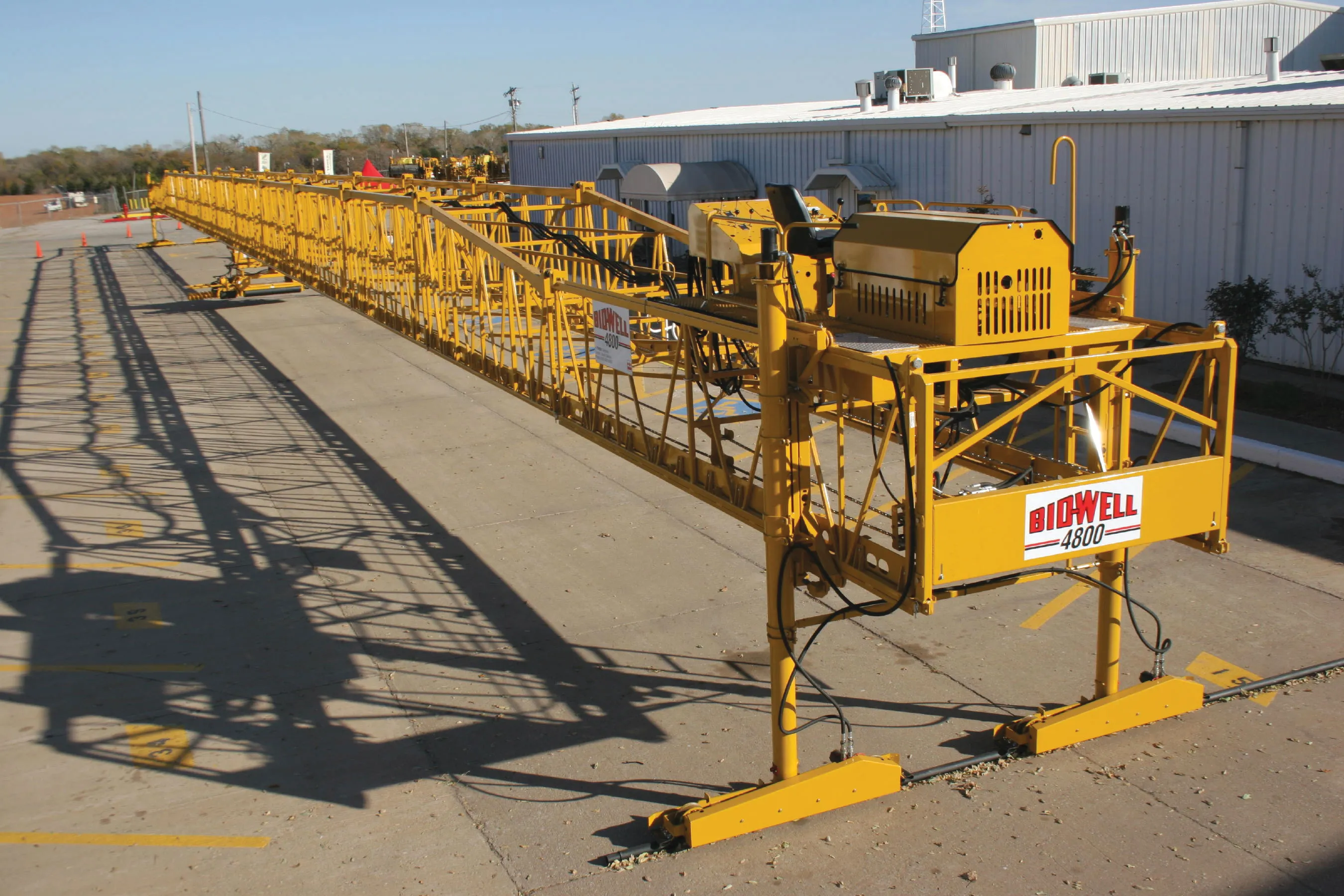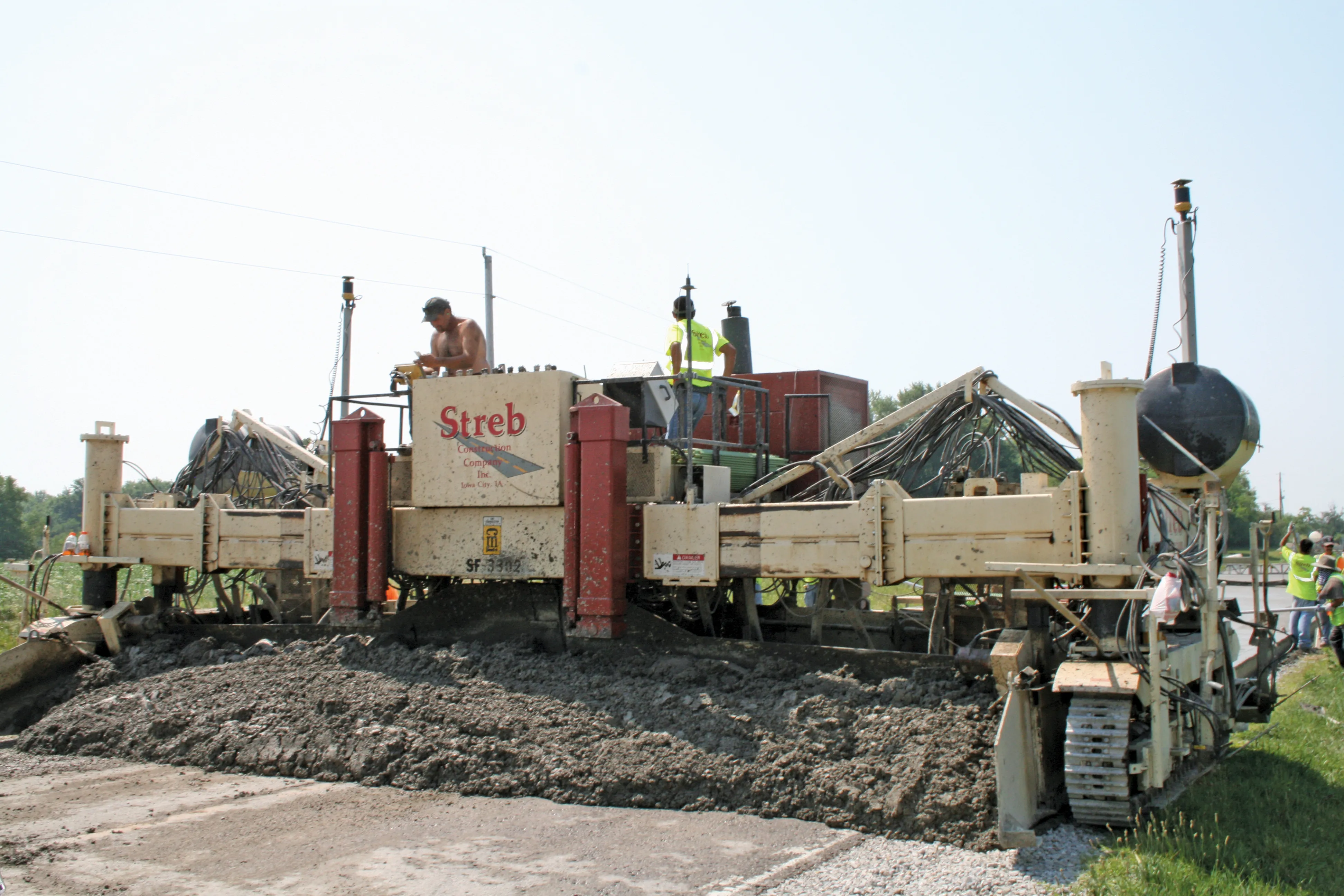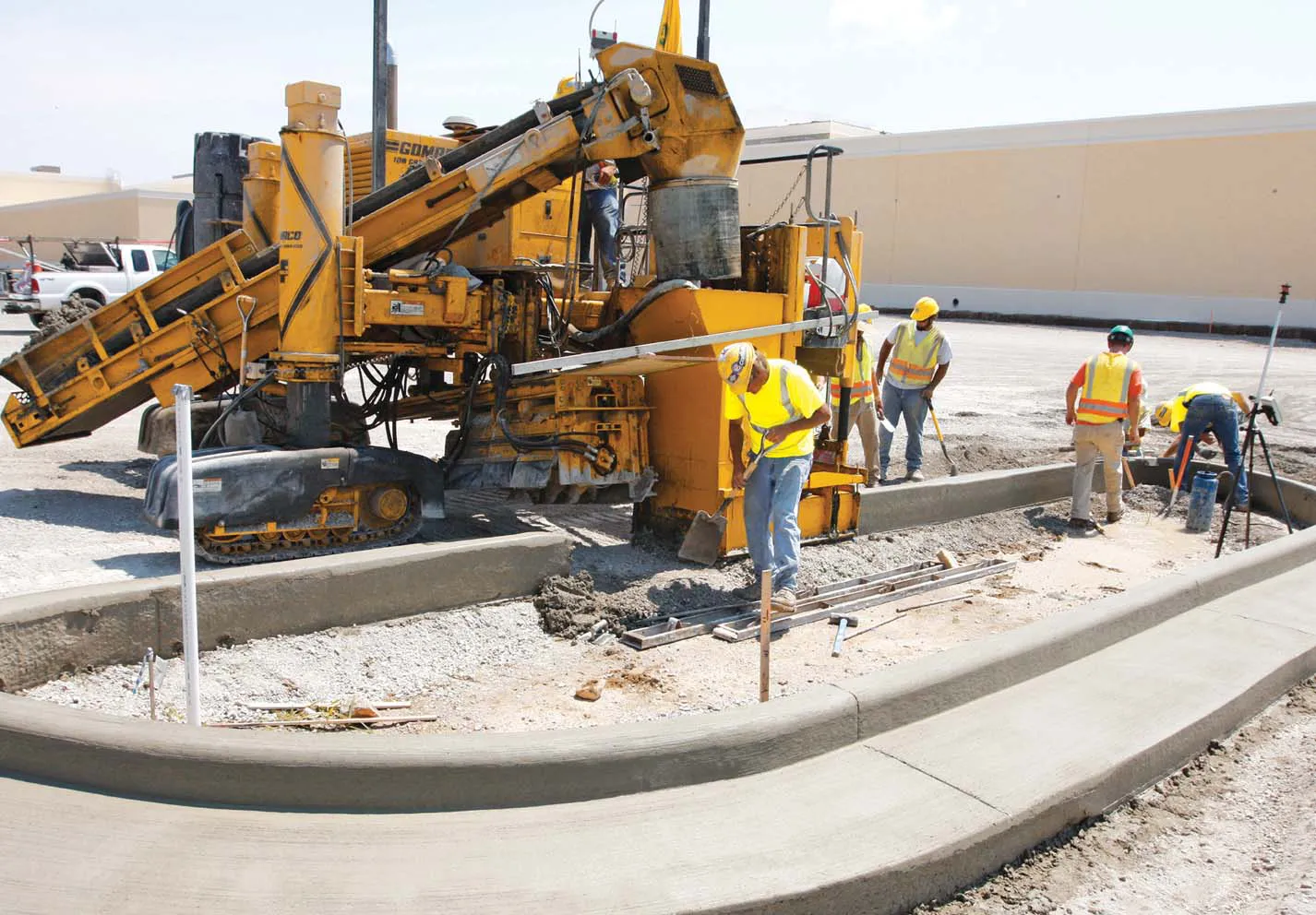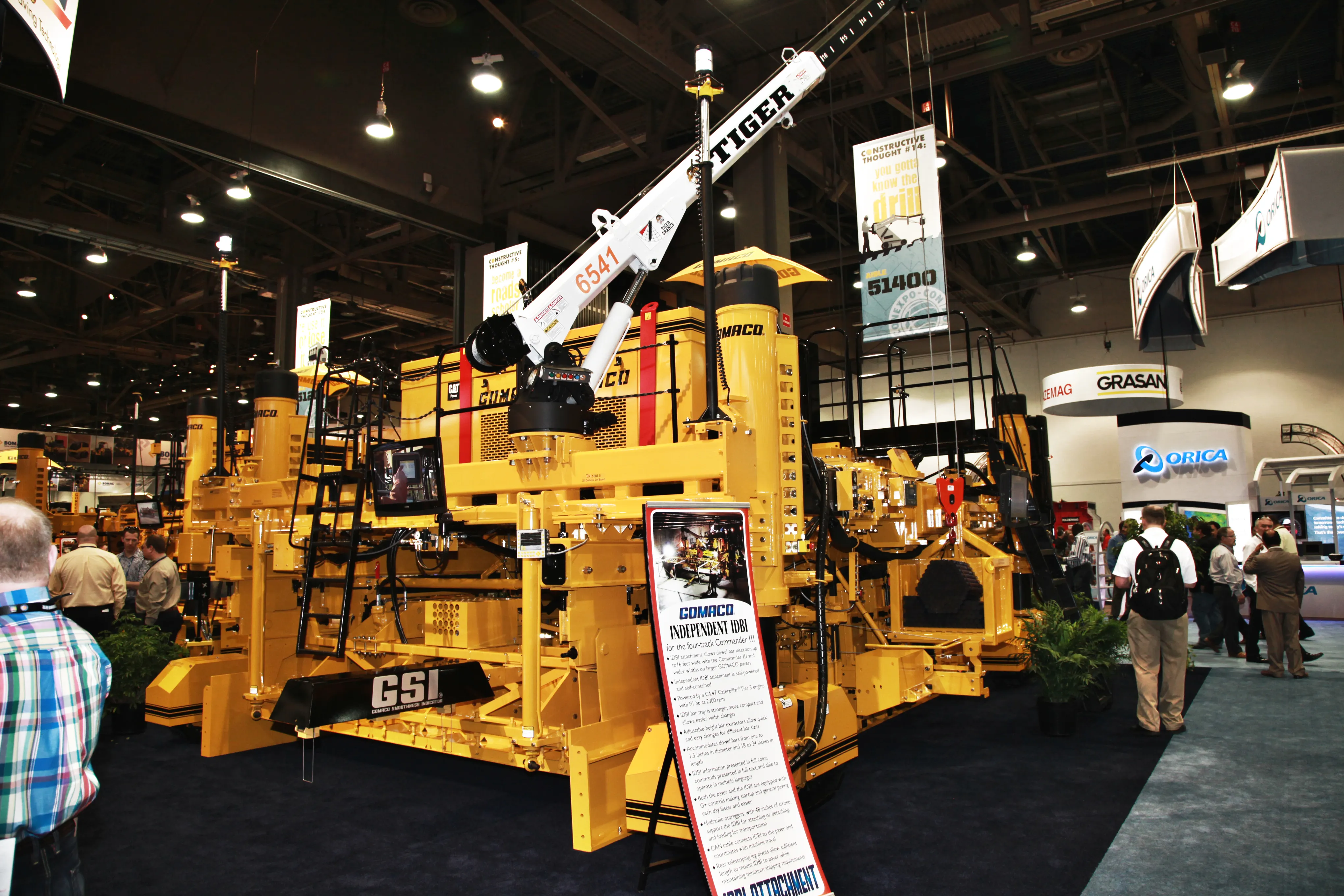In the US, a specialist contractor is making savings with new 3D technology for concrete paving. US contractor Gehring Construction is a specialist in concrete paving and is a long-time customer of GOMACO. Having bought its first GOMACO unit in 1973, Gehring has a good deal of experience in this segment. The company is now using some of the latest machine control technology, having bought a Topcon Millimetre GPS 3D stringless system, which has been used on a bypass project around the US city of Colombus. T
March 3, 2015
Read time: 4 mins
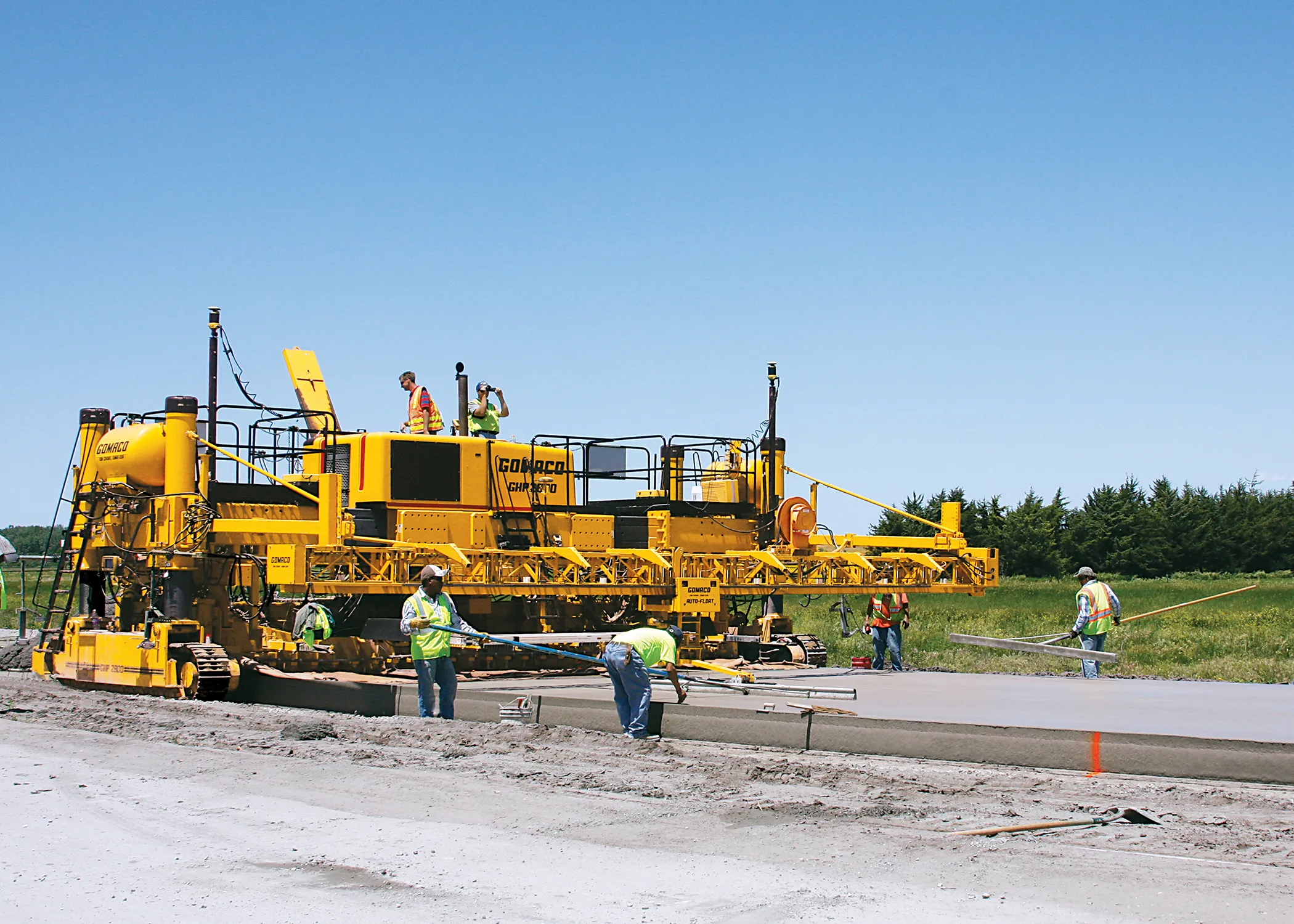
In the US, a specialist contractor is making savings with new 3D technology for concrete paving
US contractor8014 Gehring Construction is a specialist in concrete paving and is a long-time customer of 218 GOMACO. Having bought its first GOMACO unit in 1973, Gehring has a good deal of experience in this segment. The company is now using some of the latest machine control technology, having bought a 342 Topcon Millimetre GPS 3D stringless system, which has been used on a bypass project around the US city of Colombus.
The company has been using the 3DMC Topcon GPS system on its earthmoving equipment for a number years and because of this, the company was already collecting control points on the bypass project. The company realised that employing the stringless system would eliminate some of the problems associated with stringlines, according to Kevin Gehring, paving superintendent for Gehring Construction.
The company put the Topcon system to the test on a bypass, slipforming a 2.4km, four-lane section of the project. Gehring prepared the grade for the bypass with its GOMACO 9500 trimmer using the 3D system. Then, the company brought in its GOMACO paving train, which included a 9500 concrete placer, a two-track GHP-2800 slipform paver, and a T/C-600 texture/cure machine. The Topcon components used for trimming were fitted on the paver.
“In addition to the added speed and accuracy, another advantage of going with Topcon mmGPS was the fact that both the trimmer and the paver essentially share one single system,” Gehring said. “Once both machines are set up, we can use the system on the trimmer, trim the subgrade and then move it over to the paver. There, after about a five-minute switchover, we can work off the same 3D model, set the offset to reflect the thickness of the pavement and get equally impressive results on the paving.”
The concrete for the new bypass was batched from two Gehring plants, both within around 3.2km of the paving site. The concrete was a standard state of Nebraska mix design with slump averaging around 38mm.
Gehring’s GHP-2800 paver slipformed the new bypass in two 8.5m wide paving passes. A front-mounted centre bar inserter places tie bars every 838mm for the longitudinal joint.
“We have an engineer come on the job site and give us some control points,” Gehring explained. “Then I’ll come in, set up my GPS base station and tie into the control points, make a control file, add that to my surface design, and then I know our elevations will match up with their print.”
He said that the firm has survey points where it sets up the millimetre transmitters every 61m, instead of the 15.2m on a straight run or 7.6m on a curve, which has saved a lot of hubs. Although the hubs are 61m apart, these are close to the slab and the paver so the machine is going past the next hub 30.5m before switching, meaning that the firm is achieving 91.4m from each transmitter. Trimming is different and it is possible to achieve 152.4m from a transmitter in this application.
The firm says that its switch from stringlines to 3D paving has been relatively easy, with just a few points learned along the way, while personnel from GOMACO’s 3D team and Topcon helped with training and offered suggestions. Gehring said, “You have to make sure where you set up your millimetre transmitter is on a surveyed point, so those points need to have good elevations. That way, when you switch to the next one, you don’t see any elevation difference.”
Paving production on the project averaged approximately 762m/day. Behind the paver, a GOMACO T/C-600 texture/cure machine applied a two-pass white spray cure finish and longitudinal tine. With no stringline on the project, a new method of control had to be developed for the texture/cure machine. “That’s another thing we had to get new since there’s no stringline to go off anymore,” Gehring explained. “GOMACO came up with sonic sensors. Steering is referenced off one edge of the slab and grade is referenced on both sides. The sonic sensors bounce the sound beam right off the existing slab and the T/C machine has been following it.”
Gehring Construction started 3D paving hoping that the system would save time and money. “In the three months we were on that job, mmGPS probably helped us knock a couple of weeks off the overall project length,” Gehring added. “There is some saving in not having to go back and correct for high or low spots. However, the real impact comes from not having to stake the job or put up stringline, and the fact all of our Topcon-equipped machines are working off the same base and surface model also improves efficiency and lowers paving costs.”
US contractor
The company has been using the 3DMC Topcon GPS system on its earthmoving equipment for a number years and because of this, the company was already collecting control points on the bypass project. The company realised that employing the stringless system would eliminate some of the problems associated with stringlines, according to Kevin Gehring, paving superintendent for Gehring Construction.
The company put the Topcon system to the test on a bypass, slipforming a 2.4km, four-lane section of the project. Gehring prepared the grade for the bypass with its GOMACO 9500 trimmer using the 3D system. Then, the company brought in its GOMACO paving train, which included a 9500 concrete placer, a two-track GHP-2800 slipform paver, and a T/C-600 texture/cure machine. The Topcon components used for trimming were fitted on the paver.
“In addition to the added speed and accuracy, another advantage of going with Topcon mmGPS was the fact that both the trimmer and the paver essentially share one single system,” Gehring said. “Once both machines are set up, we can use the system on the trimmer, trim the subgrade and then move it over to the paver. There, after about a five-minute switchover, we can work off the same 3D model, set the offset to reflect the thickness of the pavement and get equally impressive results on the paving.”
The concrete for the new bypass was batched from two Gehring plants, both within around 3.2km of the paving site. The concrete was a standard state of Nebraska mix design with slump averaging around 38mm.
Gehring’s GHP-2800 paver slipformed the new bypass in two 8.5m wide paving passes. A front-mounted centre bar inserter places tie bars every 838mm for the longitudinal joint.
“We have an engineer come on the job site and give us some control points,” Gehring explained. “Then I’ll come in, set up my GPS base station and tie into the control points, make a control file, add that to my surface design, and then I know our elevations will match up with their print.”
He said that the firm has survey points where it sets up the millimetre transmitters every 61m, instead of the 15.2m on a straight run or 7.6m on a curve, which has saved a lot of hubs. Although the hubs are 61m apart, these are close to the slab and the paver so the machine is going past the next hub 30.5m before switching, meaning that the firm is achieving 91.4m from each transmitter. Trimming is different and it is possible to achieve 152.4m from a transmitter in this application.
The firm says that its switch from stringlines to 3D paving has been relatively easy, with just a few points learned along the way, while personnel from GOMACO’s 3D team and Topcon helped with training and offered suggestions. Gehring said, “You have to make sure where you set up your millimetre transmitter is on a surveyed point, so those points need to have good elevations. That way, when you switch to the next one, you don’t see any elevation difference.”
Paving production on the project averaged approximately 762m/day. Behind the paver, a GOMACO T/C-600 texture/cure machine applied a two-pass white spray cure finish and longitudinal tine. With no stringline on the project, a new method of control had to be developed for the texture/cure machine. “That’s another thing we had to get new since there’s no stringline to go off anymore,” Gehring explained. “GOMACO came up with sonic sensors. Steering is referenced off one edge of the slab and grade is referenced on both sides. The sonic sensors bounce the sound beam right off the existing slab and the T/C machine has been following it.”
Gehring Construction started 3D paving hoping that the system would save time and money. “In the three months we were on that job, mmGPS probably helped us knock a couple of weeks off the overall project length,” Gehring added. “There is some saving in not having to go back and correct for high or low spots. However, the real impact comes from not having to stake the job or put up stringline, and the fact all of our Topcon-equipped machines are working off the same base and surface model also improves efficiency and lowers paving costs.”


